Shunqiao Sun
Deep Frequency Attention Networks for Single Snapshot Sparse Array Interpolation
Mar 07, 2025Abstract:Sparse arrays have been widely exploited in radar systems because of their advantages in achieving large array aperture at low hardware cost, while significantly reducing mutual coupling. However, sparse arrays suffer from high sidelobes which may lead to false detections. Missing elements in sparse arrays can be interpolated using the sparse array measurements. In snapshot-limited scenarios, such as automotive radar, it is challenging to utilize difference coarrays which require a large number of snapshots to construct a covariance matrix for interpolation. For single snapshot sparse array interpolation, traditional model-based methods, while effective, require expert knowledge for hyperparameter tuning, lack task-specific adaptability, and incur high computational costs. In this paper, we propose a novel deep learning-based single snapshot sparse array interpolation network that addresses these challenges by leveraging a frequency-domain attention mechanism. The proposed approach transforms the sparse signal into the frequency domain, where the attention mechanism focuses on key spectral regions, enabling improved interpolation of missing elements even in low signal-to-noise ratio (SNR) conditions. By minimizing computational costs and enhancing interpolation accuracy, the proposed method demonstrates superior performance compared to traditional approaches, making it well-suited for automotive radar applications.
A Game-Theoretic Approach for High-Resolution Automotive FMCW Radar Interference Avoidance
Mar 04, 2025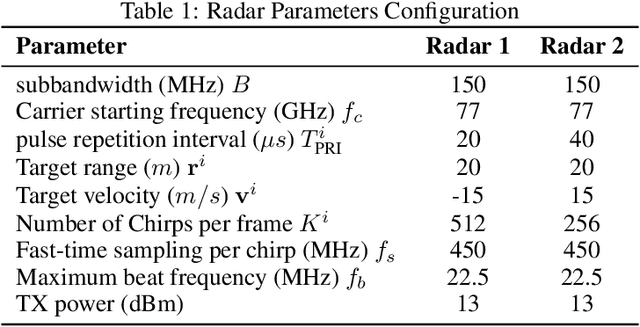
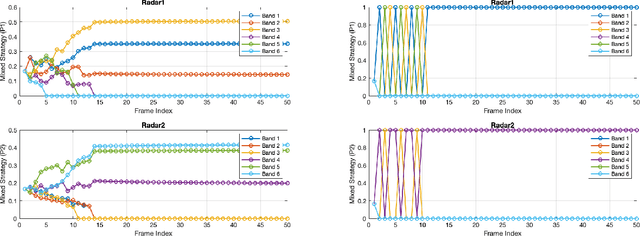
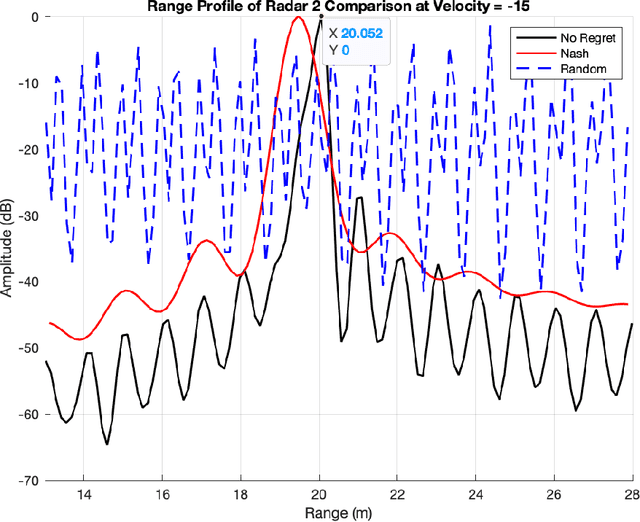
Abstract:Nonlinear frequency hopping has emerged as a promising approach for mitigating interference and enhancing range resolution in automotive FMCW radar systems. Achieving an optimal balance between high range-resolution and effective interference mitigation remains challenging, especially without centralized frequency scheduling. This paper presents a game-theoretic framework for interference avoidance, in which each radar operates as an independent player, optimizing its performance through decentralized decision-making. We examine two equilibrium concepts--Nash Equilibrium (NE) and Coarse Correlated Equilibrium (CCE)--as strategies for frequency band allocation, with CCE demonstrating particular effectiveness through regret minimization algorithms. We propose two interference avoidance algorithms: Nash Hopping, a model-based approach, and No-Regret Hopping, a model-free adaptive method. Simulation results indicate that both methods effectively reduce interference and enhance the signal-to-interference-plus-noise ratio (SINR). Notably, No-regret Hopping further optimizes frequency spectrum utilization, achieving improved range resolution compared to Nash Hopping.
Advancing Single-Snapshot DOA Estimation with Siamese Neural Networks for Sparse Linear Arrays
Jan 13, 2025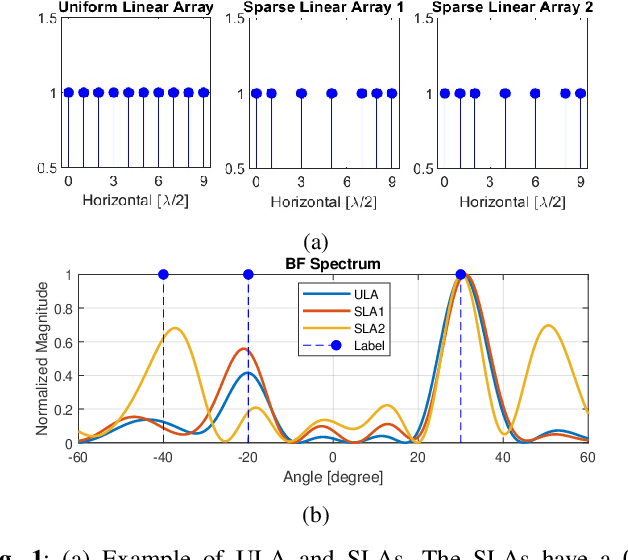
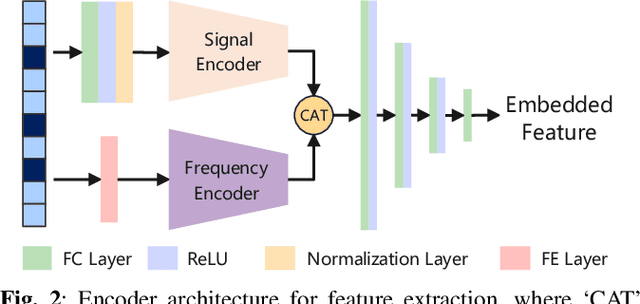
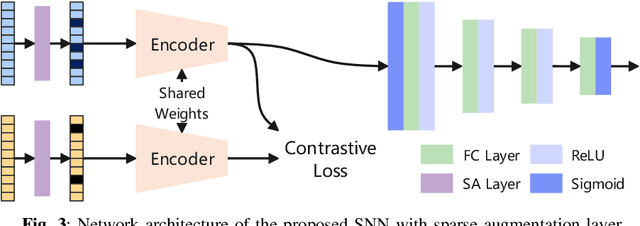
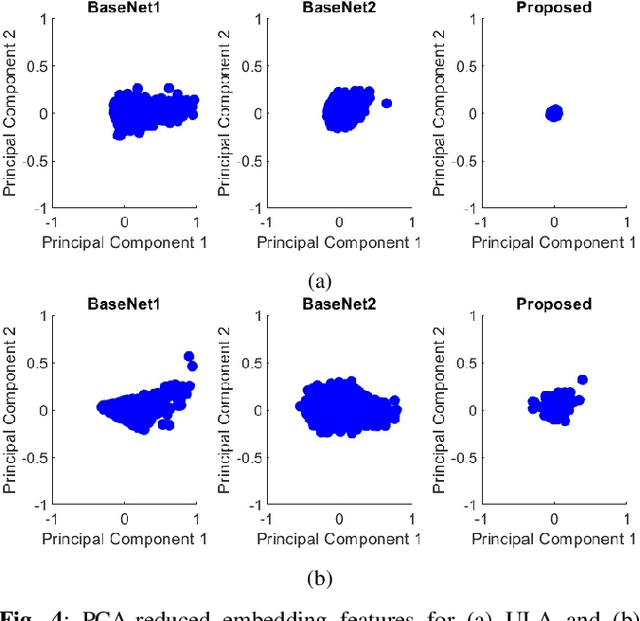
Abstract:Single-snapshot signal processing in sparse linear arrays has become increasingly vital, particularly in dynamic environments like automotive radar systems, where only limited snapshots are available. These arrays are often utilized either to cut manufacturing costs or result from unintended antenna failures, leading to challenges such as high sidelobe levels and compromised accuracy in direction-of-arrival (DOA) estimation. Despite deep learning's success in tasks such as DOA estimation, the need for extensive training data to increase target numbers or improve angular resolution poses significant challenges. In response, this paper presents a novel Siamese neural network (SNN) featuring a sparse augmentation layer, which enhances signal feature embedding and DOA estimation accuracy in sparse arrays. We demonstrate the enhanced DOA estimation performance of our approach through detailed feature analysis and performance evaluation. The code for this study is available at https://github.com/ruxinzh/SNNS_SLA.
Signal Processing Challenges in Automotive Radar
Jan 13, 2025Abstract:As automotive radars continue to proliferate, there is a continuous need for improved performance and several critical problems that need to be solved. All of this is driving research across industry and academia. This paper is an overview of research areas that are centered around signal processing. We discuss opportunities in the area of modulation schemes, interference avoidance, spatial resolution enhancement and application of deep learning. A rich list of references is provided. This paper should serve as a useful starting point for signal processing practitioners looking to work in the area of automotive radars.
Enhancing Off-Grid One-Bit DOA Estimation with Learning-Based Sparse Bayesian Approach for Non-Uniform Sparse Array
Dec 14, 2024
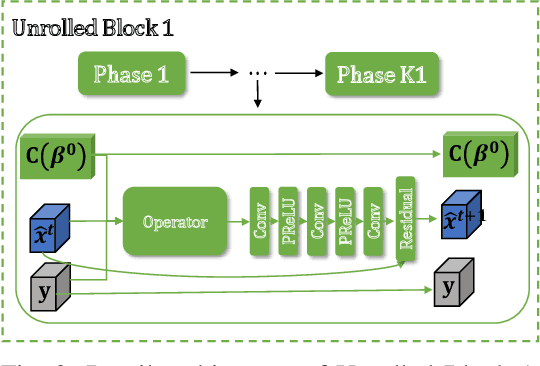
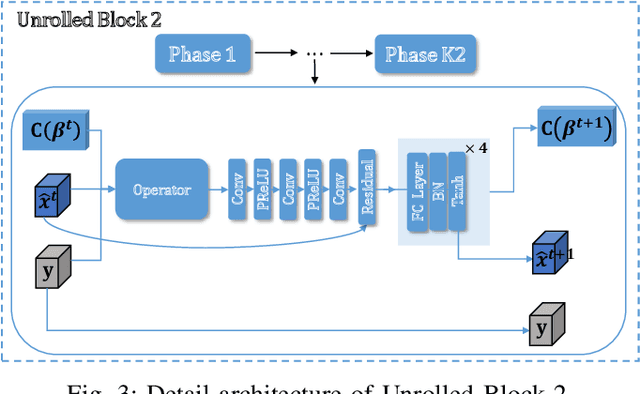
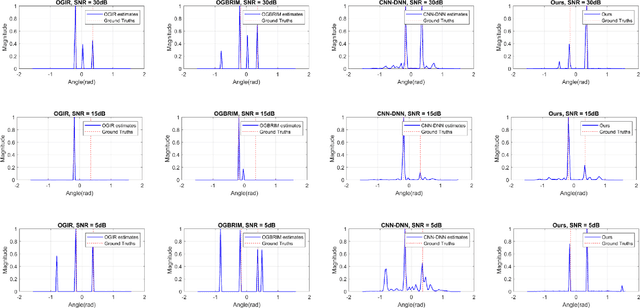
Abstract:This paper tackles the challenge of one-bit off-grid direction of arrival (DOA) estimation in a single snapshot scenario based on a learning-based Bayesian approach. Firstly, we formulate the off-grid DOA estimation model, utilizing the first-order off-grid approximation, incorporating one-bit data quantization. Subsequently, we address this problem using the Sparse Bayesian based framework and solve iteratively. However, traditional Sparse Bayesian methods often face challenges such as high computational complexity and the need for extensive hyperparameter tuning. To balance estimation accuracy and computational efficiency, we propose a novel Learning-based Sparse Bayesian framework, which leverages an unrolled neural network architecture. This framework autonomously learns hyperparameters through supervised learning, offering more accurate off-grid DOA estimates and improved computational efficiency compared to some state-of-the-art methods. Furthermore, the proposed approach is applicable to both uniform linear arrays and non-uniform sparse arrays. Simulation results validate the effectiveness of the proposed framework.
Redefining Automotive Radar Imaging: A Domain-Informed 1D Deep Learning Approach for High-Resolution and Efficient Performance
Jun 11, 2024Abstract:Millimeter-wave (mmWave) radars are indispensable for perception tasks of autonomous vehicles, thanks to their resilience in challenging weather conditions. Yet, their deployment is often limited by insufficient spatial resolution for precise semantic scene interpretation. Classical super-resolution techniques adapted from optical imaging inadequately address the distinct characteristics of radar signal data. In response, our study redefines radar imaging super-resolution as a one-dimensional (1D) signal super-resolution spectra estimation problem by harnessing the radar signal processing domain knowledge, introducing innovative data normalization and a domain-informed signal-to-noise ratio (SNR)-guided loss function. Our tailored deep learning network for automotive radar imaging exhibits remarkable scalability, parameter efficiency and fast inference speed, alongside enhanced performance in terms of radar imaging quality and resolution. Extensive testing confirms that our SR-SPECNet sets a new benchmark in producing high-resolution radar range-azimuth images, outperforming existing methods across varied antenna configurations and dataset sizes. Source code and new radar dataset will be made publicly available online.
Enhanced Automotive Radar Collaborative Sensing By Exploiting Constructive Interference
May 27, 2024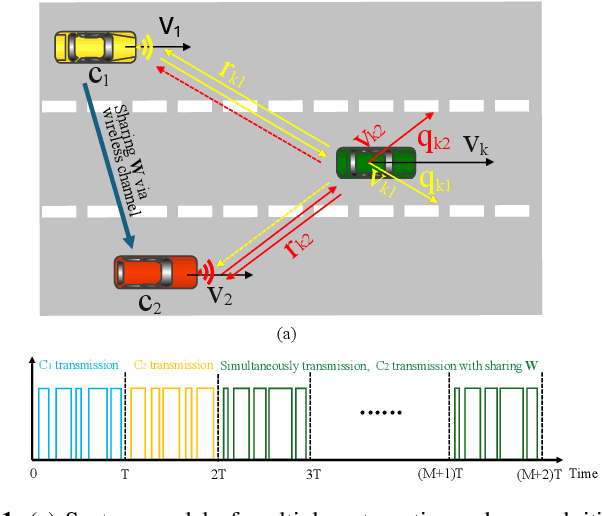
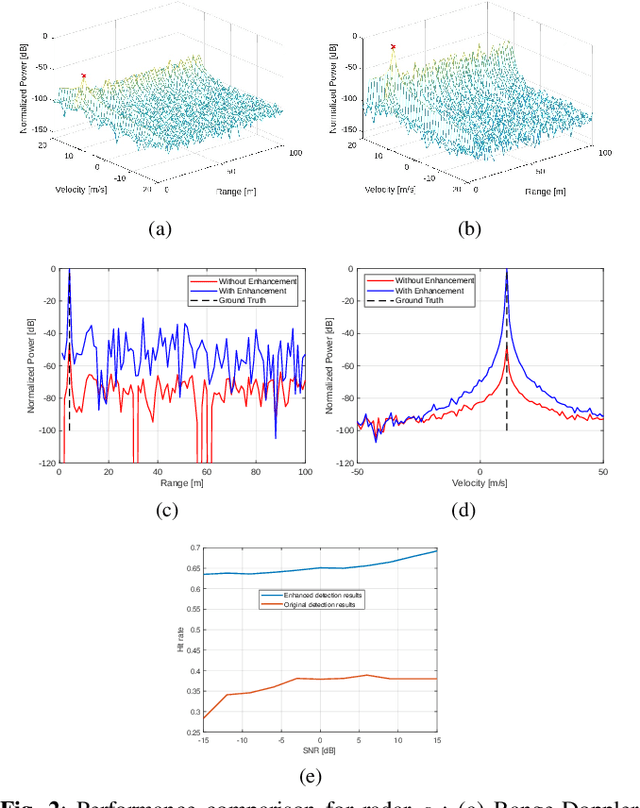
Abstract:Automotive radar emerges as a crucial sensor for autonomous vehicle perception. As more cars are equipped radars, radar interference is an unavoidable challenge. Unlike conventional approaches such as interference mitigation and interference-avoiding technologies, this paper introduces an innovative collaborative sensing scheme with multiple automotive radars that exploits constructive interference. Through collaborative sensing, our method optimally aligns cross-path interference signals from other radars with another radar's self-echo signals, thereby significantly augmenting its target detection capabilities. This approach alleviates the need for extensive raw data sharing between collaborating radars. Instead, only an optimized weighting matrix needs to be exchanged between the radars. This approach considerably decreases the data bandwidth requirements for the wireless channel, making it a more feasible and practical solution for automotive radar collaboration. Numerical results demonstrate the effectiveness of the constructive interference approach for enhanced object detection capability.
Antenna Failure Resilience: Deep Learning-Enabled Robust DOA Estimation with Single Snapshot Sparse Arrays
May 05, 2024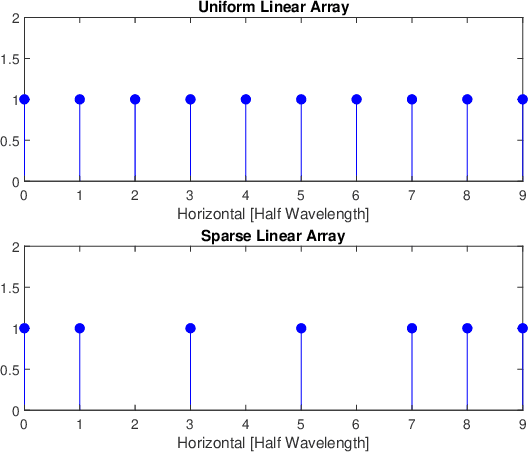
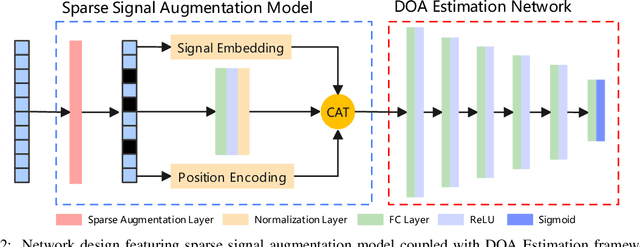
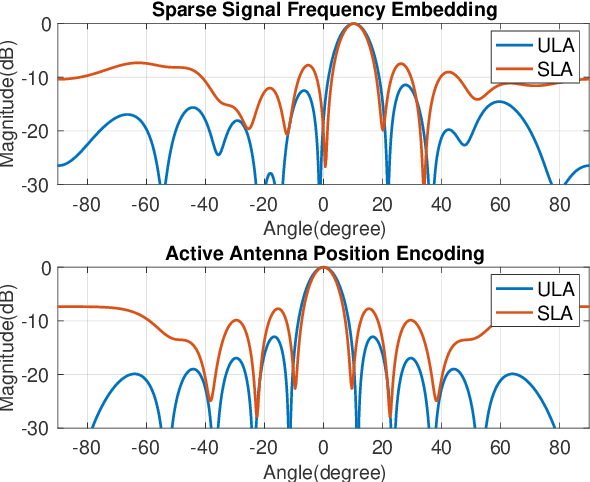
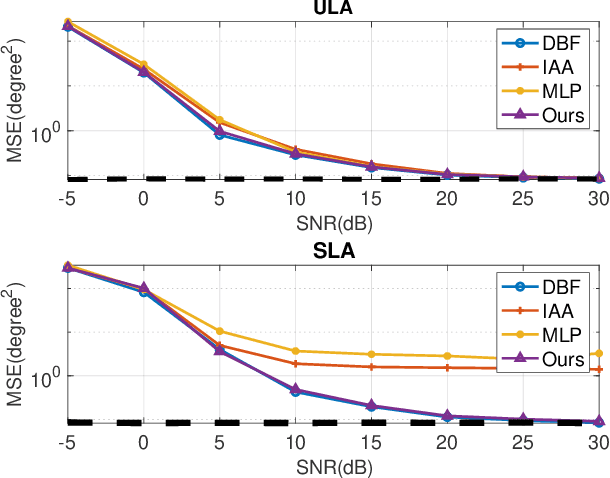
Abstract:Recent advancements in Deep Learning (DL) for Direction of Arrival (DOA) estimation have highlighted its superiority over traditional methods, offering faster inference, enhanced super-resolution, and robust performance in low Signal-to-Noise Ratio (SNR) environments. Despite these advancements, existing research predominantly focuses on multi-snapshot scenarios, a limitation in the context of automotive radar systems which demand high angular resolution and often rely on limited snapshots, sometimes as scarce as a single snapshot. Furthermore, the increasing interest in sparse arrays for automotive radar, owing to their cost-effectiveness and reduced antenna element coupling, presents additional challenges including susceptibility to random sensor failures. This paper introduces a pioneering DL framework featuring a sparse signal augmentation layer, meticulously crafted to bolster single snapshot DOA estimation across diverse sparse array setups and amidst antenna failures. To our best knowledge, this is the first work to tackle this issue. Our approach improves the adaptability of deep learning techniques to overcome the unique difficulties posed by sparse arrays with single snapshot. We conduct thorough evaluations of our network's performance using simulated and real-world data, showcasing the efficacy and real-world viability of our proposed solution. The code and real-world dataset employed in this study are available at https://github.com/ruxinzh/Deep_RSA_DOA.
Collaborative Automotive Radar Sensing via Mixed-Precision Distributed Array Completion
Mar 13, 2024Abstract:This paper investigates the effects of coarse quantization with mixed precision on measurements obtained from sparse linear arrays, synthesized by a collaborative automotive radar sensing strategy. The mixed quantization precision significantly reduces the data amount that needs to be shared from radar nodes to the fusion center for coherent processing. We utilize the low-rank properties inherent in the constructed Hankel matrix of the mixed-precision array, to recover azimuth angles from quantized measurements. Our proposed approach addresses the challenge of mixed-quantized Hankel matrix completion, allowing for accurate estimation of the azimuth angles of interest. To evaluate the recovery performance of the proposed scheme, we establish a quasi-isometric embedding with a high probability for mixed-precision quantization. The effectiveness of our proposed scheme is demonstrated through numerical results, highlighting successful reconstruction.
Performance Evaluation and Analysis of Thresholding-based Interference Mitigation for Automotive Radar Systems
Feb 21, 2024Abstract:In automotive radar, time-domain thresholding (TD-TH) and time-frequency domain thresholding (TFD-TH) are crucial techniques underpinning numerous interference mitigation methods. Despite their importance, comprehensive evaluations of these methods in dense traffic scenarios with different types of interference are limited. In this study, we segment automotive radar interference into three distinct categories. Utilizing the in-house traffic scenario and automotive radar simulator, we evaluate interference mitigation methods across multiple metrics: probability of detection, signal-to-interference-plus-noise ratio, and phase error involving hundreds of targets and dozens of interfering radars. The numerical results highlight that TFD-TH is more effective than TD-TH, particularly as the density and signal correlation of interfering radars escalate.
 Add to Chrome
Add to Chrome Add to Firefox
Add to Firefox Add to Edge
Add to Edge